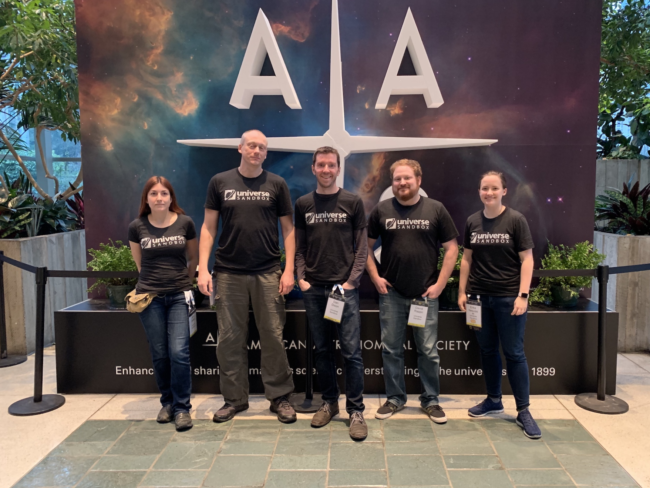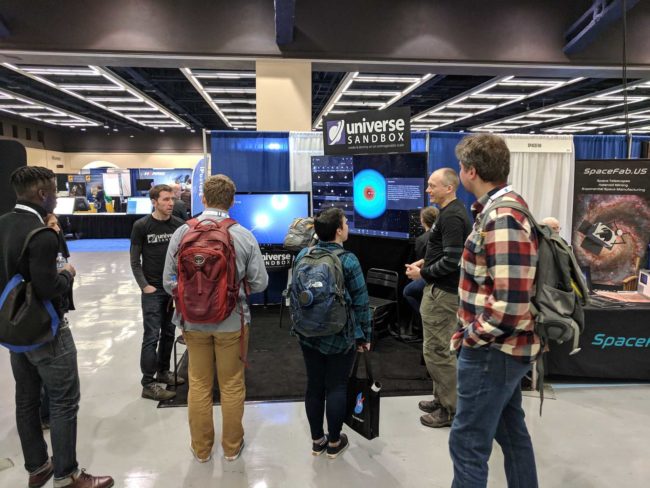Universe Sandbox at the American Astronomical Society Conference

Super Bowl of Astronomy
In early January we gathered some of our team in Seattle, Washington to show off Universe Sandbox at the 233rd meetup of the American Astronomical Society (AAS).
We’ve attended other conferences before that focus on video games, like PAX, but AAS gave us an opportunity to show Universe Sandbox to a different crowd. If you are a researcher, educator, science journalist, or student in the world of astronomy, then AAS is the go-to conference, what some call the “Super Bowl of Astronomy.” And while the government shutdown meant that hundreds of NASA employees who planned on attending couldn’t go, there was still plenty of folk there who had never heard of Universe Sandbox and wanted to learn more.

Come for the Collisions, Stay for the Accurate Mass Loss
Drawing people into our booth was helped a bit by two gigantic TVs showing off some of the usual Universe Sandbox scenarios — you know the ones: Earth melting, stars exploding, moons ripping apart under massive tidal stress.
But what made many attendees stick around and talk to us was the fact that what we were showing not only looked great, but it was also based in science. Universe Sandbox: Come for the fiery collisions, stay for the accurate mass loss when Ceres makes a near pass of a white dwarf!

Communicating with Universe Sandbox
In talking to AAS attendees, we hoped to show the potential for using Universe Sandbox for education and visualizations. While most Universe Sandbox players know and appreciate how useful it can be as an educational tool, we want to make sure it gets used in actual classrooms. We believe Universe Sandbox makes it quick and easy to demonstrate astronomy and physics concepts with intuitive and interactive experiments. But don’t take our word for it — here’s astronomy YouTuber Scott Manley with a similar message.
And beyond the classroom, it’s just as quick and easy to use Universe Sandbox for creating visualizations for research, lectures, and articles. There are more sophisticated tools for gathering data with the accuracy needed for research, but there’s nothing quite as convenient as Universe Sandbox for then using the data to create a visual representation, as shown here with the discovery of exoplanets around our nearby star Wolf 1061.
If you’re an educator, a researcher, or are otherwise curious how you can use Universe Sandbox for science communication, please get in touch!
